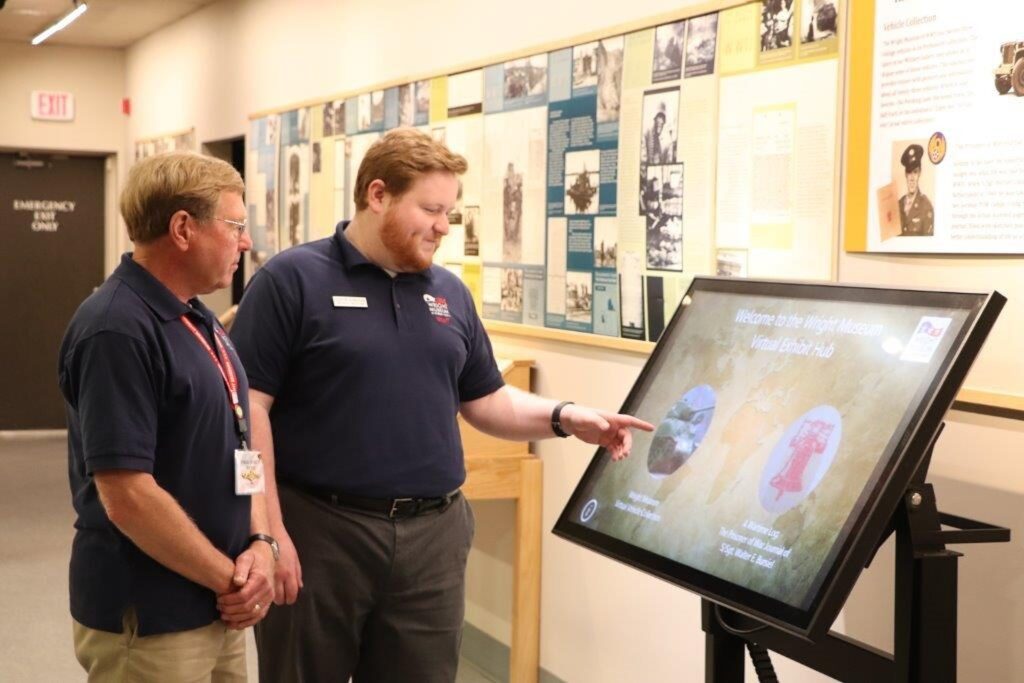At the heart of every museum, there is a collection and generally at least one individual responsible in its care and research, which in the case of Wright Museum is Justin Gamache.
“My tasks include managing and caring for artifacts, planning and putting up exhibits, and developing interactive features for our visitors,” he said.
As is the case at many museums, staff wear many hats, which Gamache said could mean helping with any aspect of the operation, including daily maintenance and event planning.
“We all do whatever it takes to advance the museum’s mission,” he said.
Founded in 1994, Wright Museum features more than 14,000 items in its collection that are representative of both the home front and battle field. Its mission is “to provide a vivid perspective on the profound and enduring impact of the World War II experience on American society.”
For Gamache, his fascination with Wright Museum, its mission and collection, did not begin when he became full-time curator in 2018 or even before that as an intern while attending University of New Hampshire.
“Having visited the museum multiple times before starting as an intern, I was already familiar with its unique collection and important mission,” he explained. “When I had to opportunity to stay after my internship, it was an easy decision. I am glad to play a part in keeping the museum’s mission alive for the education of future generations.”
Wright Museum Executive Director Mike Culver said he is happy Gamache stayed, too.
“Justin has brought an area of technical expertise with technology that has significantly impacted our operation,” he said. “He has created several wonderful touchscreen exhibits and made us more interactive with visitors. In addition to virtual exhibits, Justin is also working on future exhibits, both in-house and outside traveling exhibits.”
According to Culver, Gamache not only possesses “a fine overall sense of American and European history,” but a willingness to do “whatever it takes to make The Wright successful.”
“He does everything from true curatorial tasks to changing light bulbs, dusting and cleaning, lifting, carrying, climbing ladders, dressing mannequins, and so much more,” he said. “He also works well with our Board members, donors, volunteers, staff and visitors…Like every member of the staff here, Justin exemplifies a true dedication to our work.”
As the region’s leading resource for educators and learners of all ages on World War II, Wright Museum will reopen in May of 2020, although school tours can be arranged from January-April.




